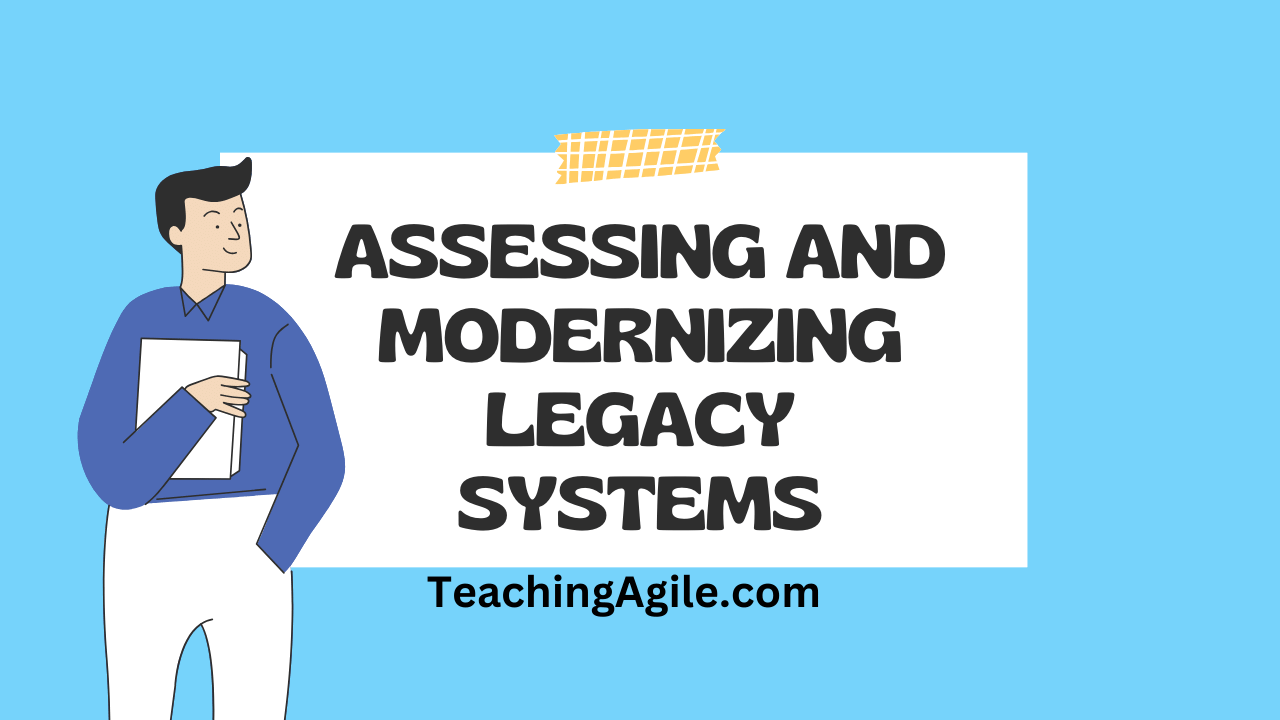
Assessing and Modernizing Legacy Systems: Embracing Modernization
 Assessing and Modernizing Legacy Systems: Embracing Modernization
Assessing and Modernizing Legacy Systems: Embracing Modernization
Legacy systems, often characterized as outdated software, applications, or technologies, continue to operate within many organizations despite their age and decreasing efficiency.
Managing legacy systems can be a challenge. Such systems may not only hinder business performance but also pose significant security risks.
Conducting a comprehensive system audit is essential not only for identifying potential risks and inefficiencies but also for laying the groundwork for strategic modernization plans.
This guide provides a detailed overview of assessing, modernizing and maintaining legacy systems, ensuring that your organization's IT infrastructure meets current demands and future readiness.
Table Of Contents-
Detailed Analysis and Evaluation of Legacy Software
Legacy Software Assessment
Assessing legacy software involves a thorough examination to understand its architecture, functionality, and integration with current systems.
This step is crucial for determining the potential for upgrades or replacement.
System Performance Audit
A system performance audit is critical to identify the efficiency and responsiveness of the existing system.
This audit helps pinpoint performance bottlenecks and areas for optimization.
Obsolete Software Evaluation
Evaluating obsolete software includes reviewing the software components no longer supported by the vendor.
This evaluation helps assess the risks associated with system failures or security breaches.
Best Practices for Legacy System Audit and Modernization
Modernization Plan Development
Developing a modernization plan involves outlining steps to transition from old systems to new, robust solutions.
This plan should include technology upgrades, data migration strategies, and integration of modern IT infrastructure.
System Audit Practices
Effective system audit practices encompass comprehensive reviews of all IT systems, focusing on security, data integrity, and operational efficiency.
This helps in maintaining compliance and ensuring system robustness.
Step-by-Step Legacy System Modernisation
A step-by-step approach to legacy system modernization ensures a structured and minimally disruptive transition.
This approach involves system assessment, planning, execution, testing, and maintenance.
Addressing Common Challenges in Legacy System Modernization
Software Application Challenges
Addressing software application challenges involves resolving issues related to outdated interfaces, unsupported software, and incompatibility with modern hardware.
Legacy Application Audit
Conducting a legacy application audit assesses the current state of applications and determines the feasibility of their integration with new technologies.
Comprehensive Modernization Guide
A comprehensive guide to legacy system modernization includes methodologies for assessing, planning, and implementing technology upgrades that align with business goals.
Frequently Asked Questions (FAQs) / People Also Ask (PAA)
What is a legacy system and why is it critical to evaluate?
What does a comprehensive audit of legacy systems entail?
Why are legacy systems often vulnerable to security threats?
What challenges are commonly encountered during legacy system modernization?
What benefits do organizations gain from modernizing legacy systems?
Continue Reading
Learn about Software Development Life Cycle (SDLC)Get an overview of the Software Development Life Cycle (SDLC), and learn about the key phases and activities involved.
Requirement Analysis Phase in SDLCTake a deep dive into the first phase of the Software Development Life Cycle (SDLC), and learn about the importance of requirement analysis.
Design Phase in SDLCLearn about the design phase of the Software Development Life Cycle (SDLC), and the key activities and deliverables involved.
Development Phase in SDLCExplore the activities and collaboration of different roles during the development phase of the SDLC, and understand how unit testing and automation contribute to a quality software product.
Testing Phase in SDLCExplore the SDLC testing phase and its critical role in ensuring software quality and reliability. Learn about different testing types, methodologies, and their importance.
Deployment Phase in SDLCDiscover the SDLC deployment phase, its importance, and how to ensure a successful software launch. Learn about different deployment strategies and best practices.
Waterfall model in SDLCDiscover the ins and outs of the Waterfall model, a fundamental Software Development Life Cycle (SDLC) methodology. Learn its advantages and disadvantages.
Effective Requirements Gathering: Techniques and TipsDiscover effective strategies for business analysts to master requirements gathering, ensuring projects are built on clear, actionable requirements.